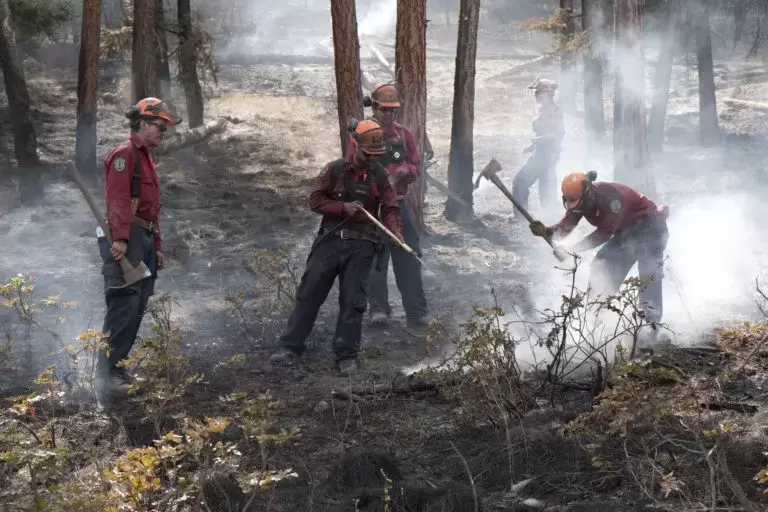Summer has not yet officially arrived but several forest fires are already being fought throughout the province, according to the BC Wildfire Service.
Since April 1 of this year there have been 21 wildfires throughout the Coastal Fire Centre , part of the 207 fires that have burned in the entire province this spring.
As of Monday May 15, there are 56 active fires in the province, seven of which are in the Coastal Fire Centre according to the by the BC Wildfire Service. Forty of the province’s active fires are said to be human caused, 14 caused by lightning and two with unknown causes.
On Wednesday May 10, one of the first wildfires on Vancouver Island burned on Thunder Mountain, 25 km northwest of Port Alberni. Twelve firefighters battled the blaze that was being held at just over one-third of a hectare as of Thursday morning. It is not yet determined what caused the fire but the Coastal Fire Centre suspects that it was human caused.
According to the BC Wildfire Service, since April 1, two other wildfires have burned on Vancouver Island, both in the mid-island region and both suspected to be human caused. One fire was 2.5 hectares in size north of Great Central Lake and the other 0.10 hectares 13 km south of Taylor Main.
There is currently one fire said to be ‘out of control’ in the Coastal Fire Centre that was discovered 20 km from the Squamish Valley on Saturday, May 13. As of May 15, the fire is said to be 17 hectares in size and is not responding to suppression efforts. The BC Wildfire Services suspects it was human caused.
“Spring wildfires are almost always human-caused and therefore preventable. Human starts are generally due to carelessness and a lack of planning. If you light a fire you are responsible for its placement (clear of debris, nothing overhanging and a manageable size), monitoring it, and putting it out,” said Marg Drysdale, Fire Information Officer with the Coastal Fire Centre. “Find an area clear of debris, on mineral soil with no overhead hazards. Monitor it at all times and have a means to extinguish it – a shovel, available water, etc.”
Drysdale said a wildfire can occur at any time of the year, all it needs is oxygen, fuel and heat. In the Coastal Fire Centre crews have responded to fires in every month but Drysdale says the summer months are more risky due to the heat, dry fuels, more people out recreating and a higher risk of lightning.
The three-month forecast for May, June and July from Environment Canada is calling for above average temperatures, with average rainfall for most of the Coastal Fire Centre. This week highs in Port Alberni are said to reach 32 degrees Celsius and unseasonably hot weather will persist over coastal B.C.
“June rains are always a moderator of the rest of the fire season,” Drysdale said. “If it rains a lot in June it provides moisture to vegetation which can help reduce its ability to burn compared to not having that moisture.”
Drysdale added that the Coastal Fire Centre does not currently have any prohibitions in place but anyone lighting a fire requires the means to put it out. The consequences for starting a fire and not managing it can be dire, she said.
One of the biggest risks at this time of year, said Drysdale, are Category 2 fires.
A category 2 fire is an open fire that is larger than a Category 1 (campfire – 0.5 metres by 0.5 metres) but not exceeding two metres in height and three metres in width. These are often associated with backyard debris burning or party fires.
“Whether there is a prohibition in place or not anyone lighting a fire is responsible for monitoring it and putting it out. Out means completely out and cold to the touch,” Drysdale said. “Once a prohibition is in place anyone found in contravention of an open burning prohibition may be issued a violation ticket for $1,150, required to pay an administrative penalty of up to $10,000 or, if convicted in court, fined up to $100,000 and/or sentenced to one year in jail. If the contravention causes or contributes to a wildfire, the person responsible may be ordered to pay all firefighting and associated costs. Violators could also be held responsible for damages to Crown resources, which could be significant.”

